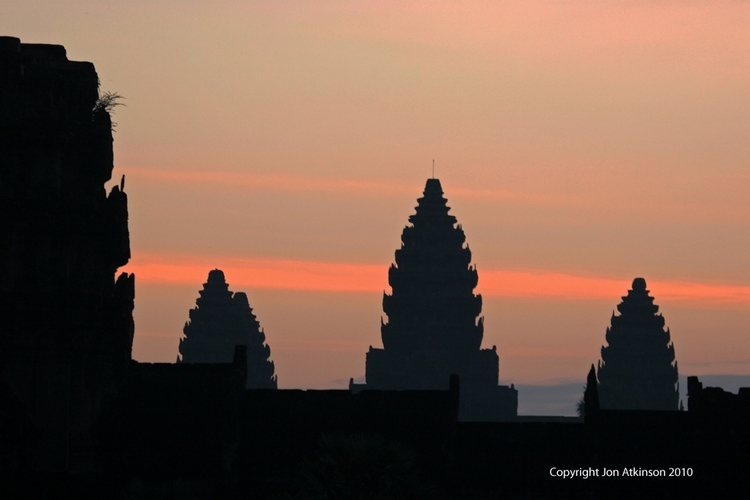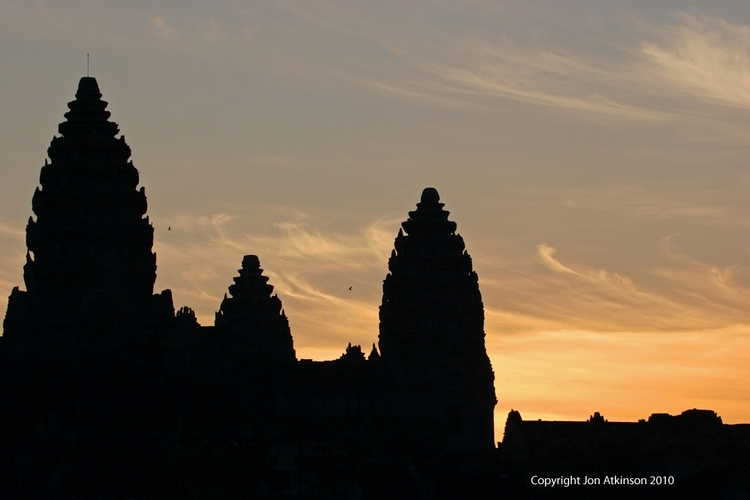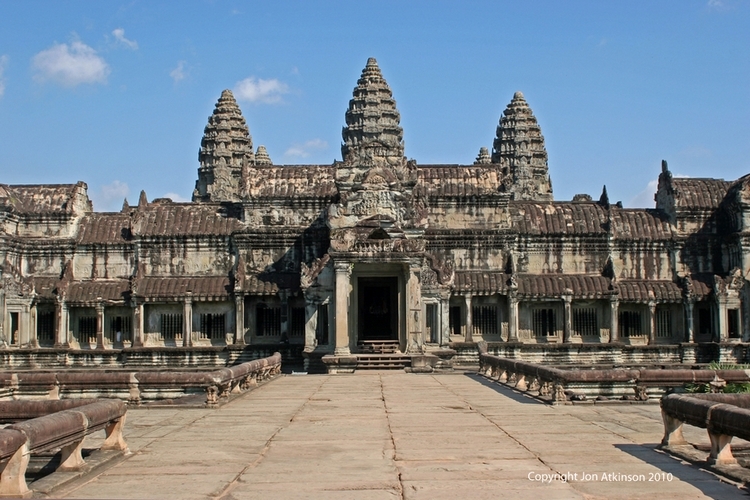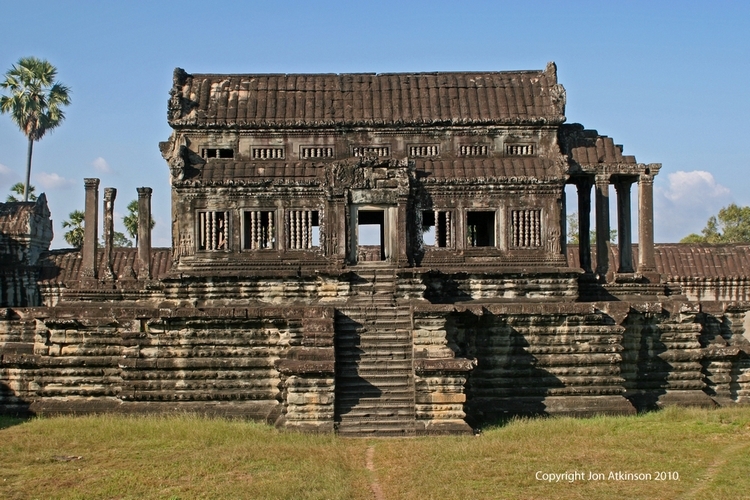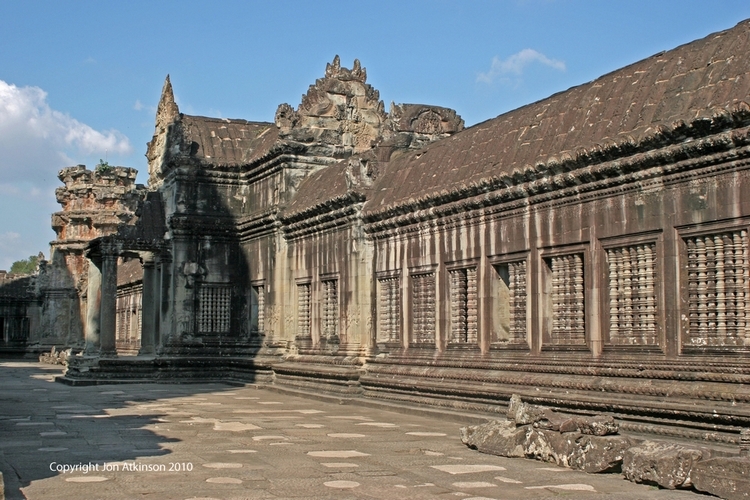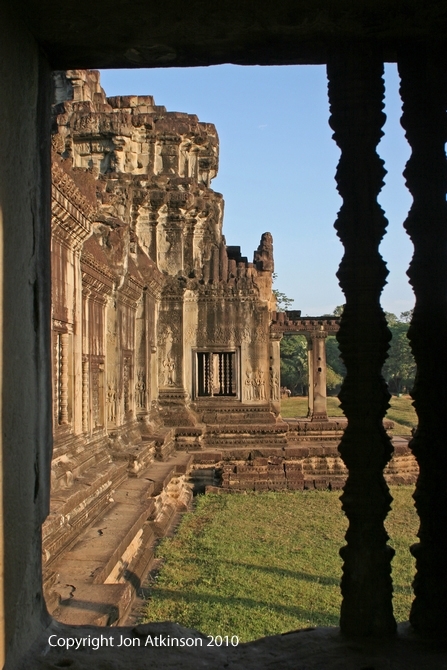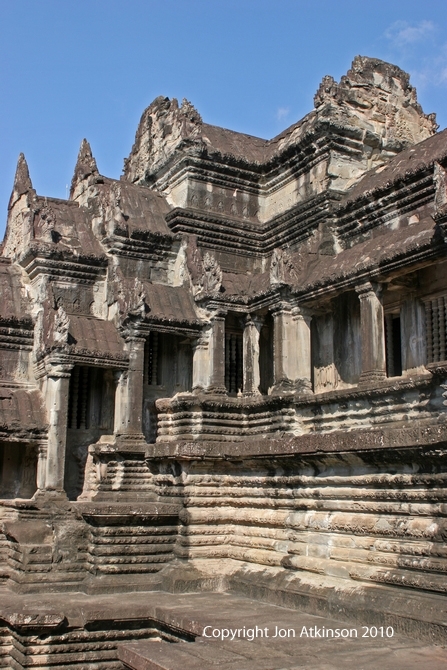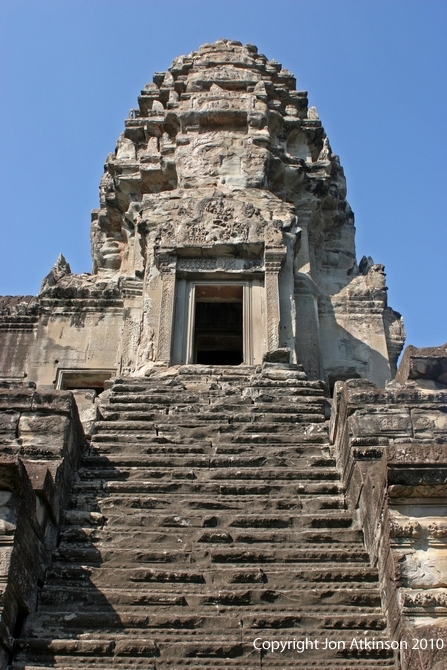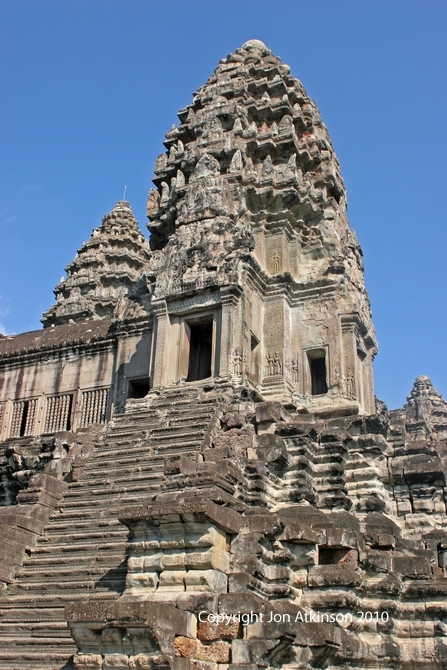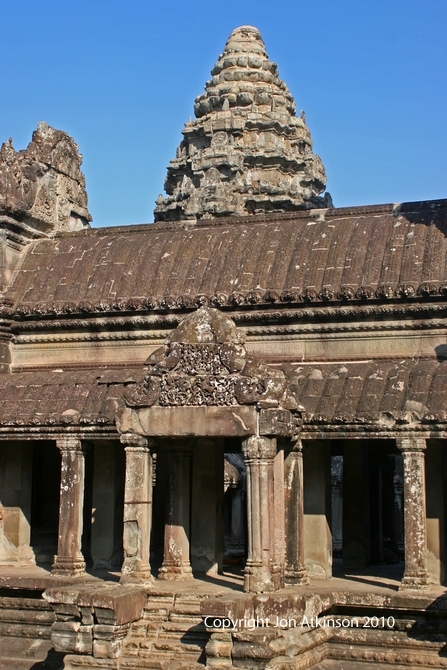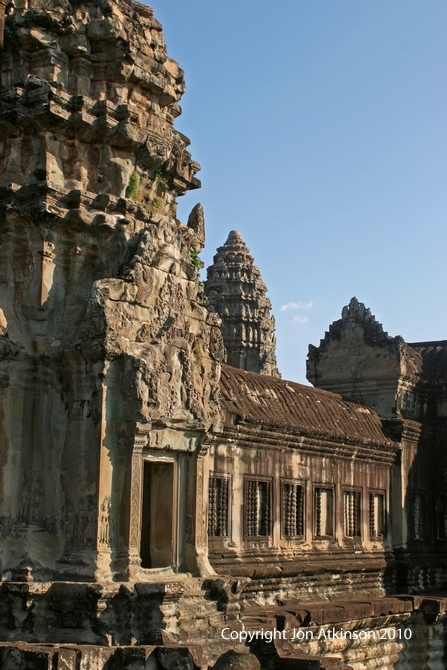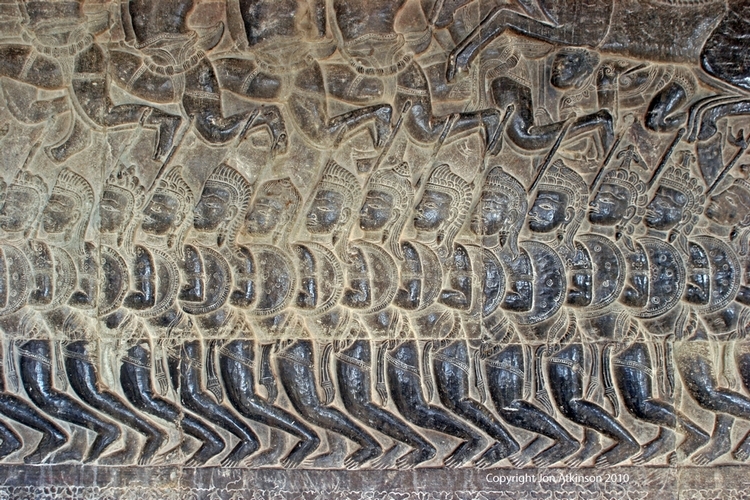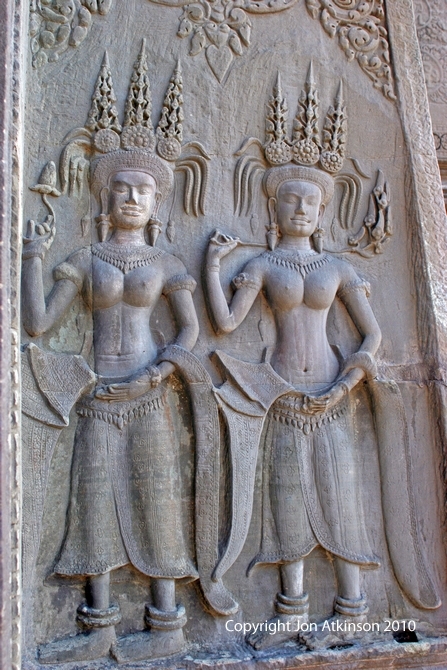Angkor Wat 1 - Sunrise at Angkor Wat Temple, Cambodia: Angkor is one of the most important archaeological sites in South-East Asia. Stretching over some 400 square kilometers including forested area, Angkor Archaeological Park contains the magnificent remains of the different capitals of the Khmer Empire, from the 9th to the 15th century. |
Angkor Wat 2 - Sunrise at Angkor Wat Temple, Cambodia: The whole Angkor period spans for more than six centuries from the IX until XV. During this period the Khmer empire reached its maximum splendor as one of the most powerful southeast asian kingdoms. |
Angkor Wat 3 - Sunrise at Angkor Wat Temple, Cambodia: Angkor Wat is the largest religious structure in the world, forming a rectangle of about 1,500 by 1,300 meters. It covers an area, including its 190 meter wide moats, of 203 acres (820,000 square meters). |
Angkor Wat 4 - Angkor Wat Temple, Angkor, Cambodia: Angkor Wat was initially built as a temple to Vishnu in the12th century by King Suryavarman II. It is 65m high divided into several layers. The central part has on the four corners four towers in the shape of a lotus flower.
| Angkor Wat 5 - Library, Angkor Wat, Cambodia: One of the two libraries within the Angkor Wat complex is located towards the South Western corner. The roof is intact and constructed from carved stone tiles. |
Angkor Wat 6 - External Enclosure Wall, Angkor Wat: The external enclosure wall defines an expanse of 1,025 meters by 800. It is the largest monument of the Angkor group.
|
Angkor Wat 8 - Angkor Wat Temple, Angkor Thom: The word “wat” in Khmer, the language of Cambodia, means school or place of learning. Many temples have the title “wat” affixed because educational texts are stored at the temple and monks study there. |
Angkor Wat 9 - Central Tower, Angkor Wat: The innermost sanctum, resting on a high podium and reached by steep stairs reminiscent of those in Mayan temples in Central America. |
|
Angkor Wat 10 - Central Stone Towers, Angkor Wat: An elaborately layered, un mortared stone tower crowns the center, rising to a height of 213 feet (behind), with similar but slightly lower towers in each corner. |
Angkor Wat 11 - ACorner Tower, Angkor Wat: Angkor Wat has a number of distinct towers which rise above the temple complex. Five central towers, which are intended to represent the home of the gods, are surrounded by enclosing walls and more towers. |
Angkor Wat 12 - Library, Angkor Wat, Cambodia: This Library is in extremely good condition with traces of the original colouring upon features on the walls as well as sections of the stone-slab ceilings. |
Angkor Wat 13 - Central Structures, Angkor Wat: After the temple was overrun by the jungle, rumors that a huge complex located near the ancient city of Angkor persisted. The city remained lost until the French naturalist and explorer, Henri Mouhot (1826-1861) rediscovered the temple in 1860. |
Angkor Wat 14 - Apsara Nymphs, Angkor Wat: The most famous decorations of Angkor are the heavenly nymphs (Apsara), there are more of 300, each one is unique and in total we can group them in 30 different styles. |
Angkor Wat 15 - Bas-Relief Scenes, Angkor Wat: Bas relief is a method of carving or molding in which a design stands out from a flat surface. Angkor Wat has bas reliefs covering hundreds of meters, all carved in stone. In this example the sculptors structured the face, armor and arm movement of each warrior in individualized fashion. |

